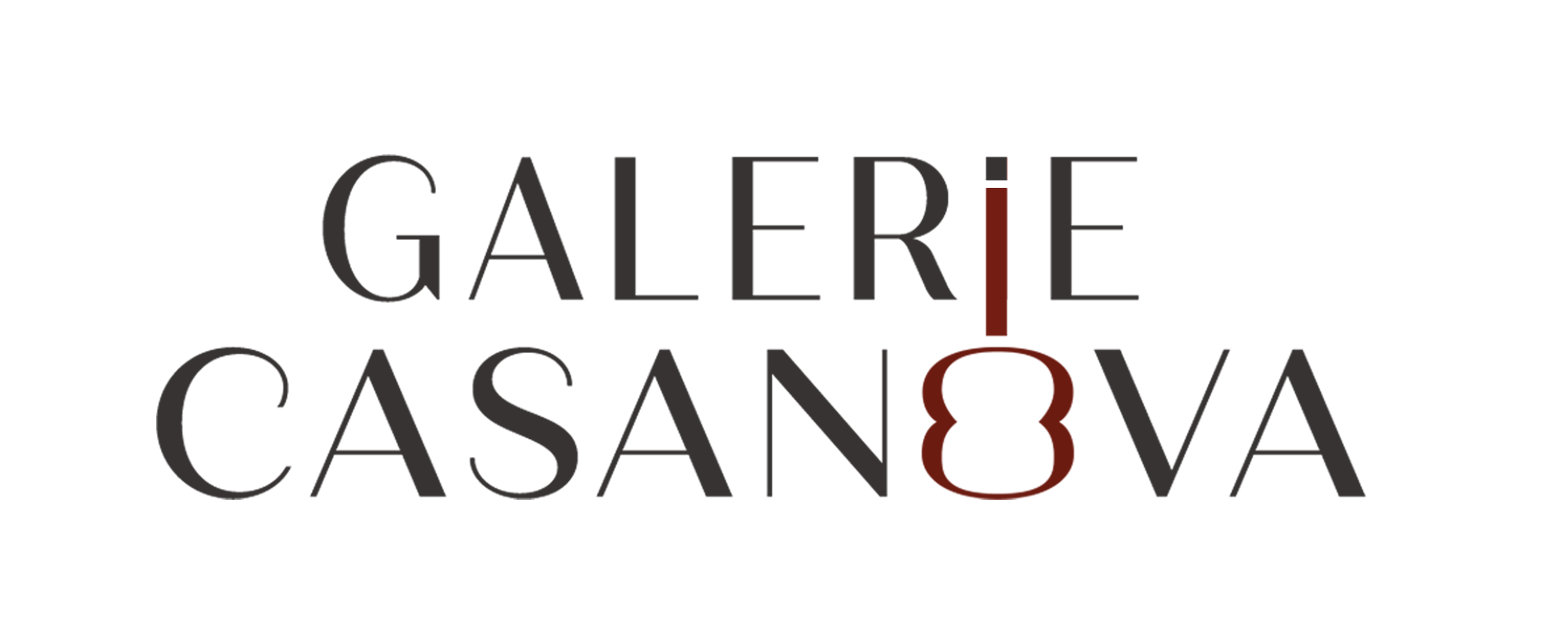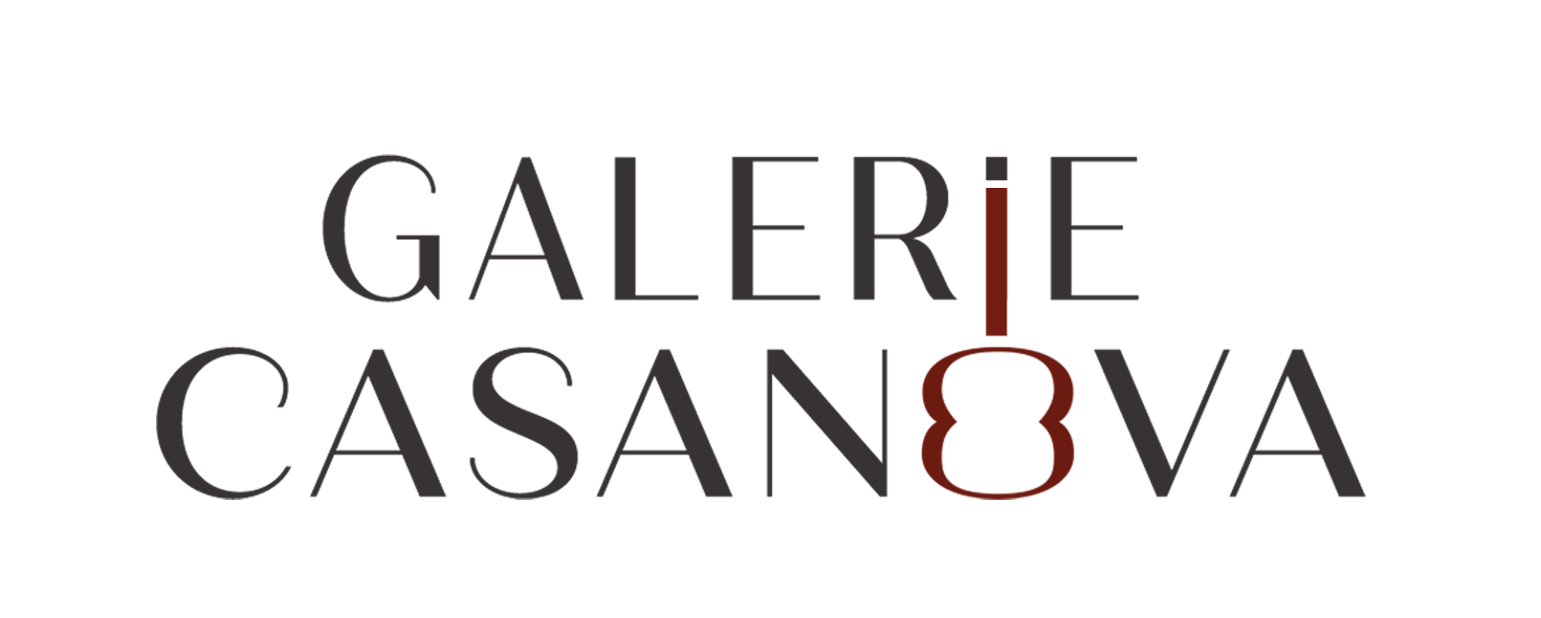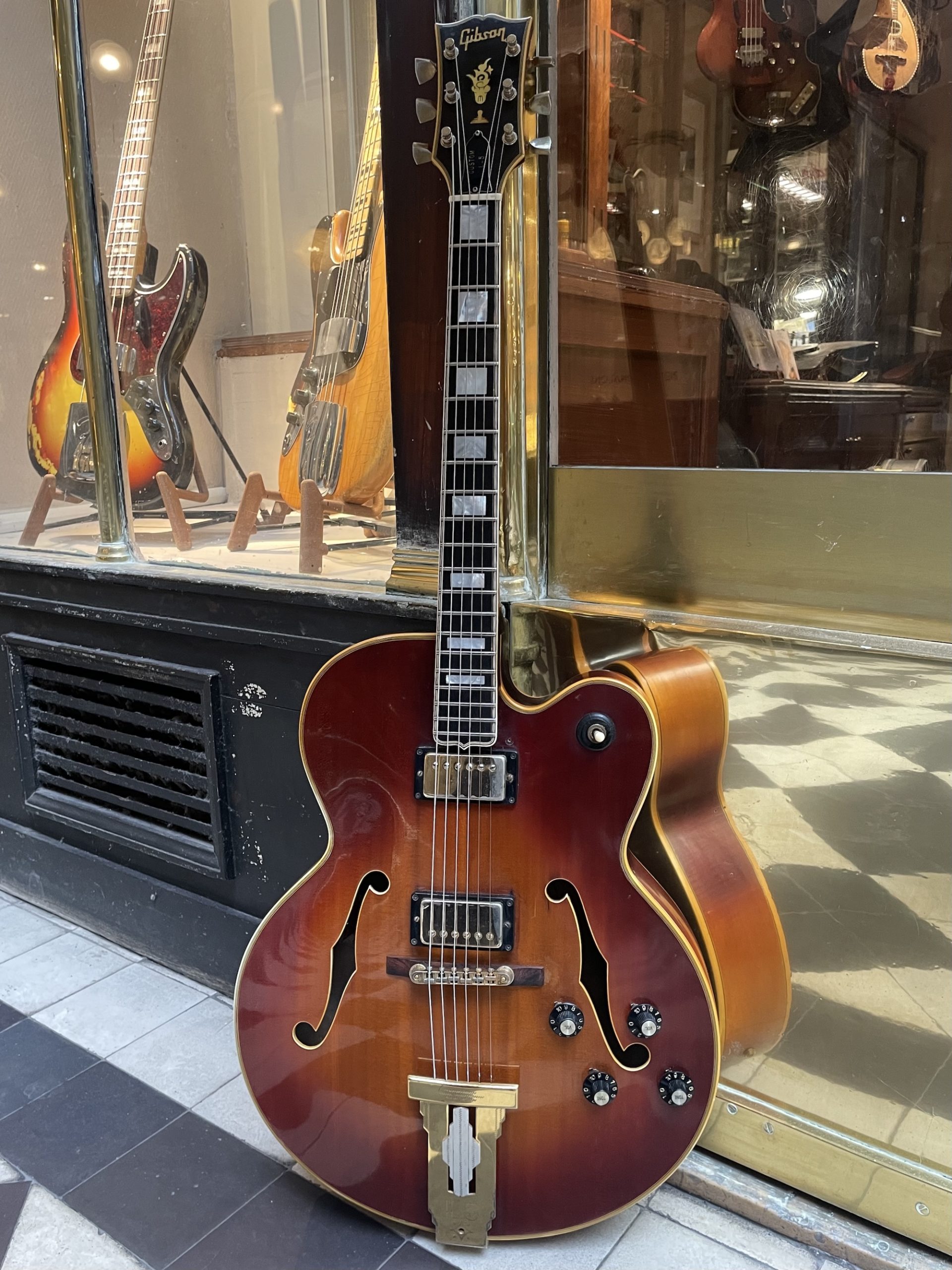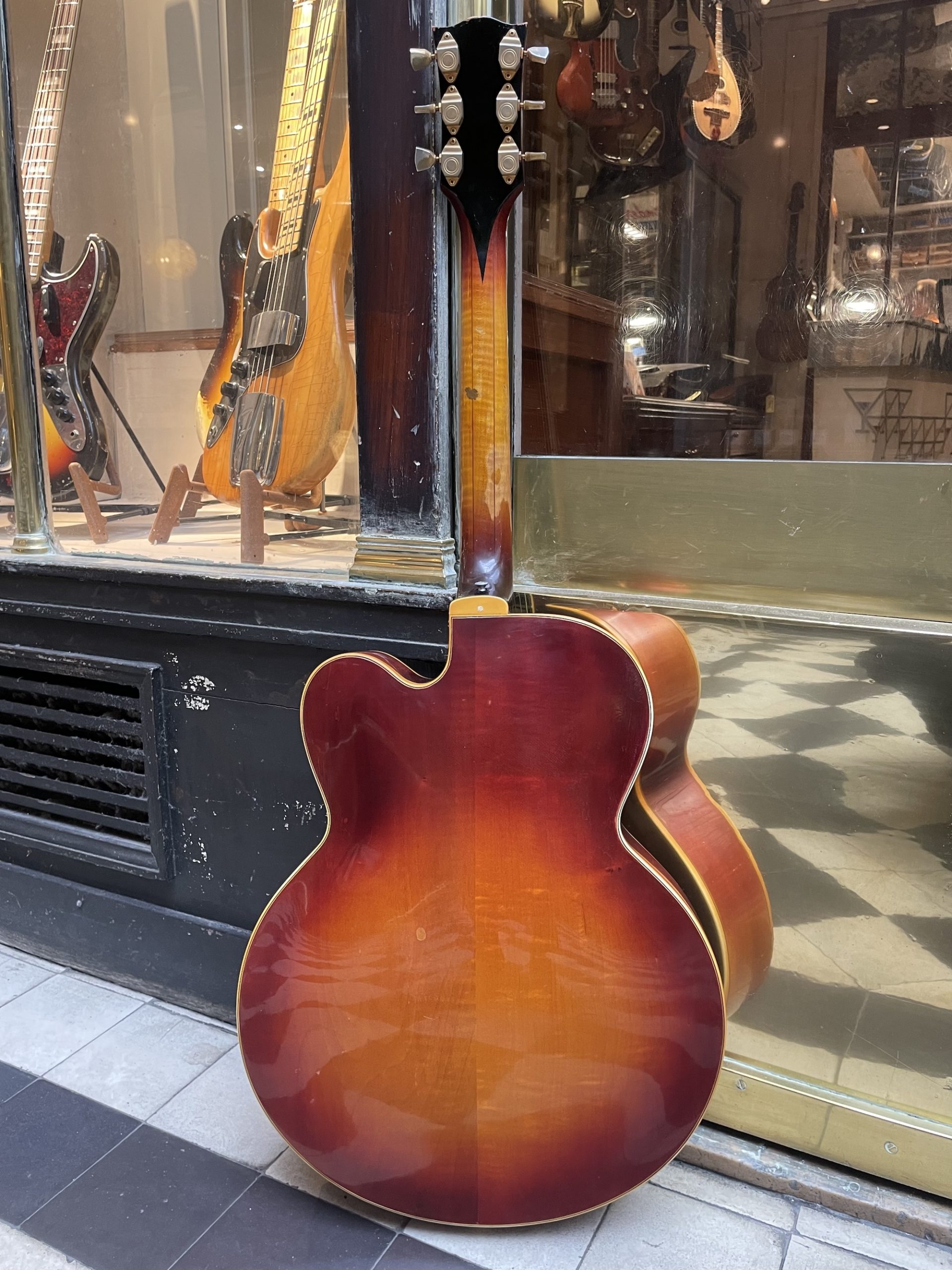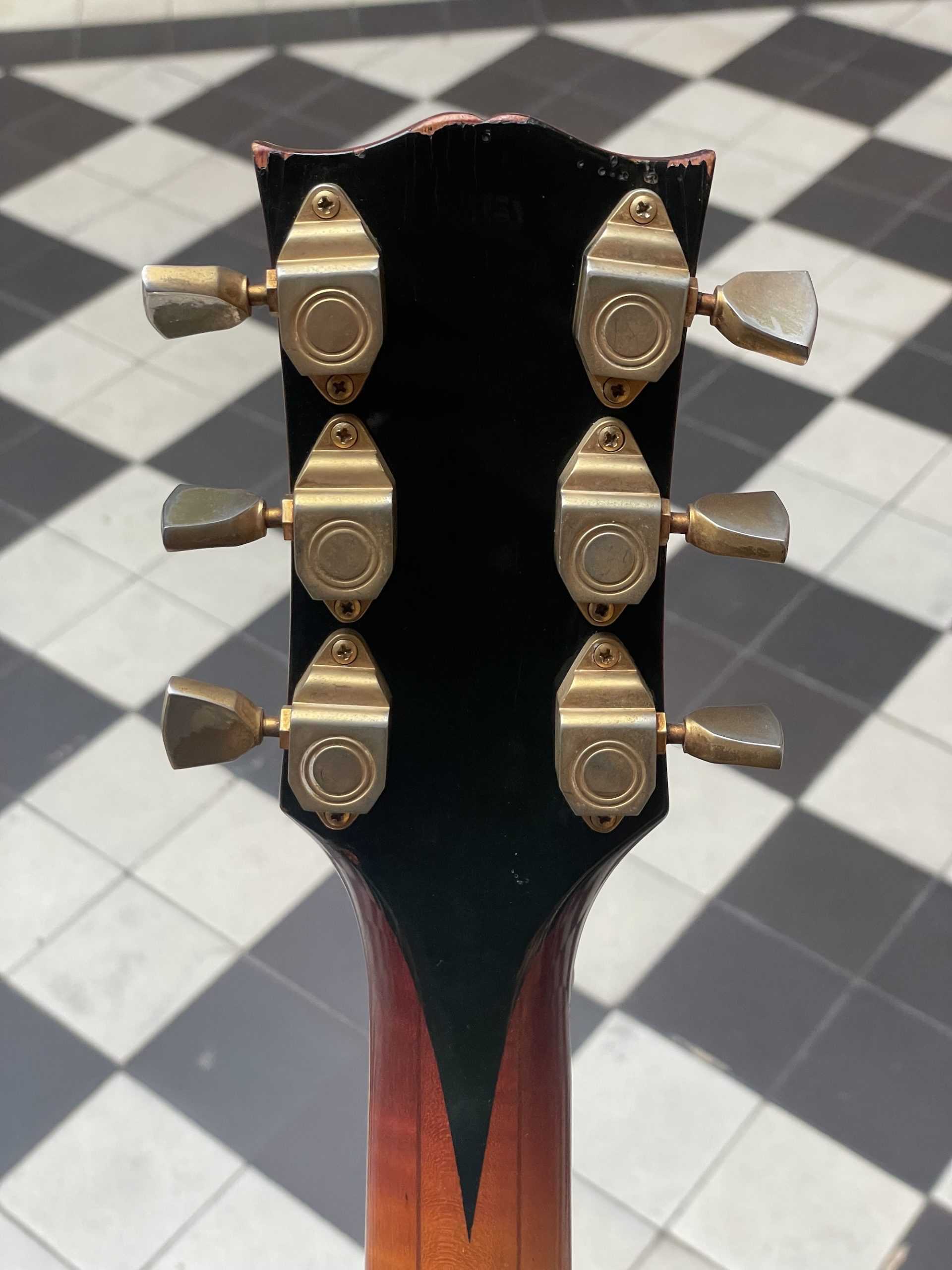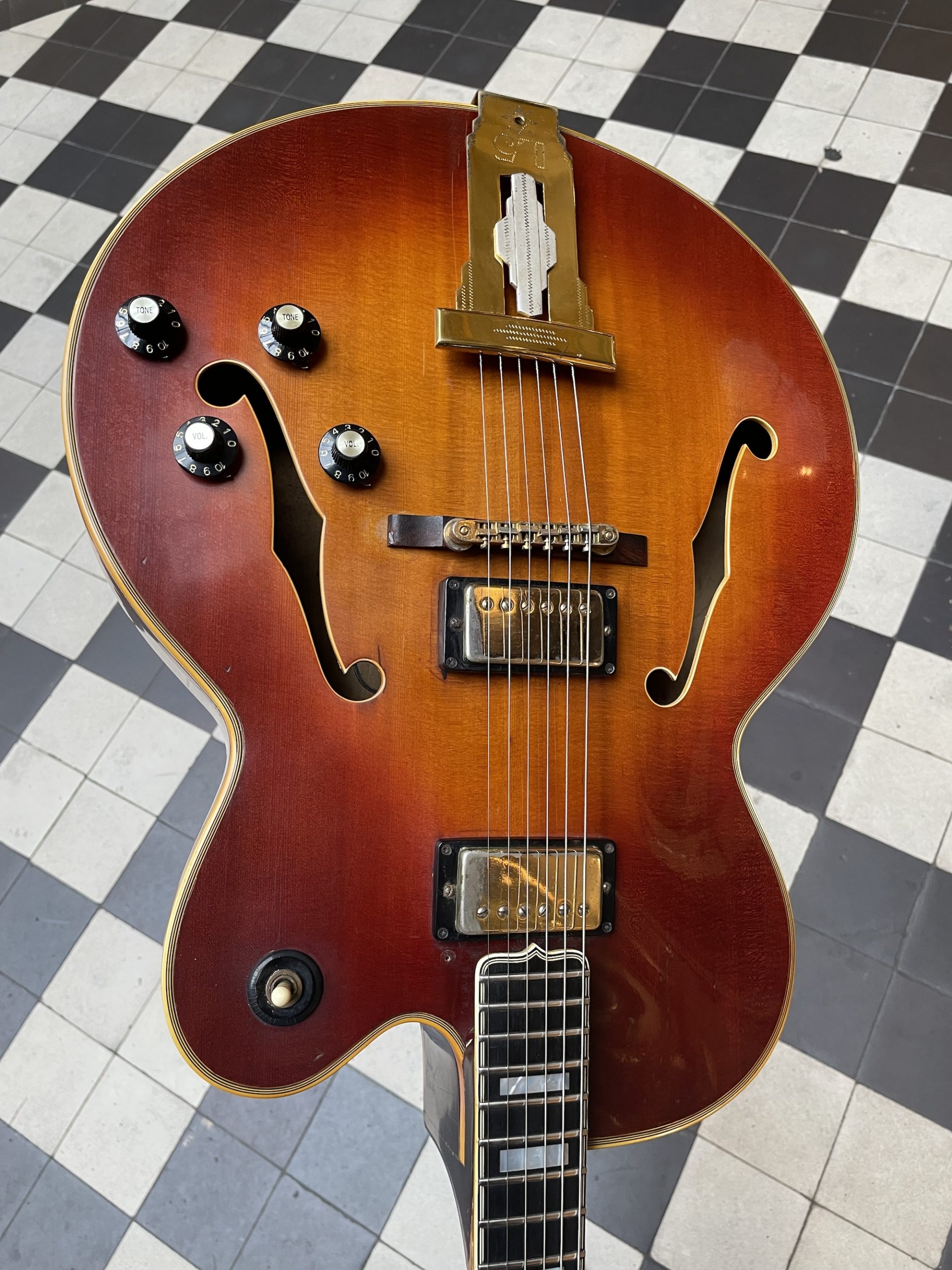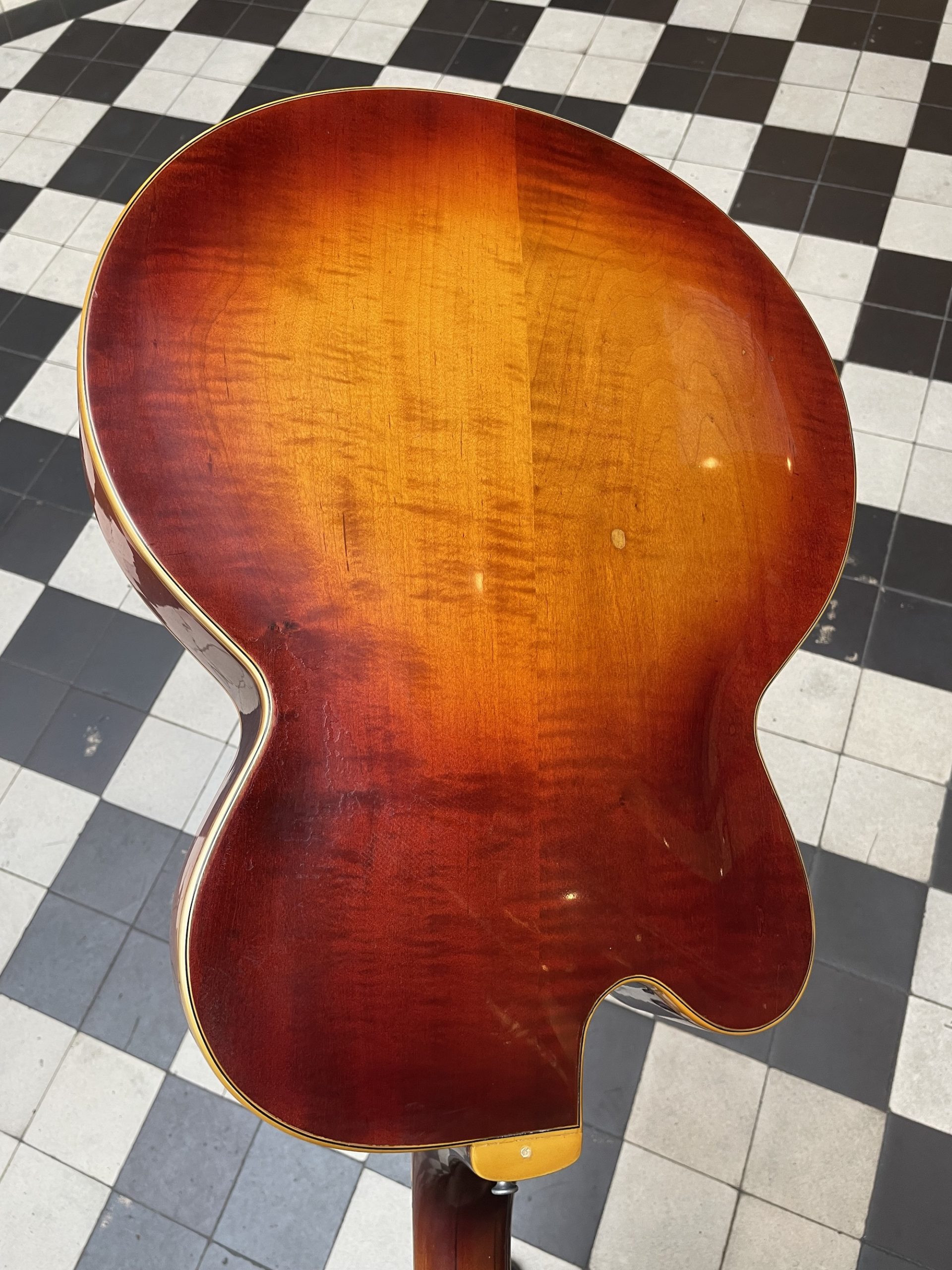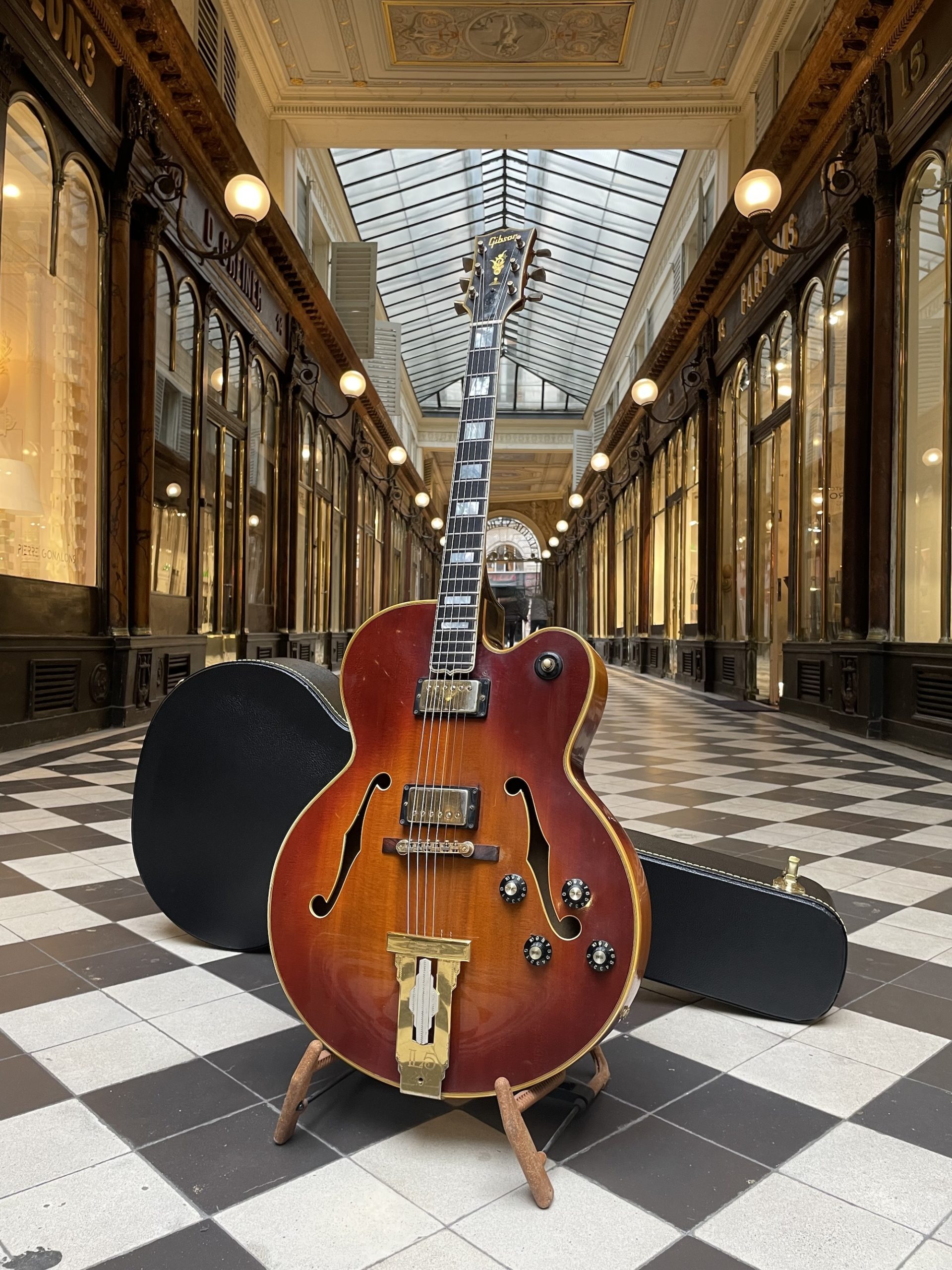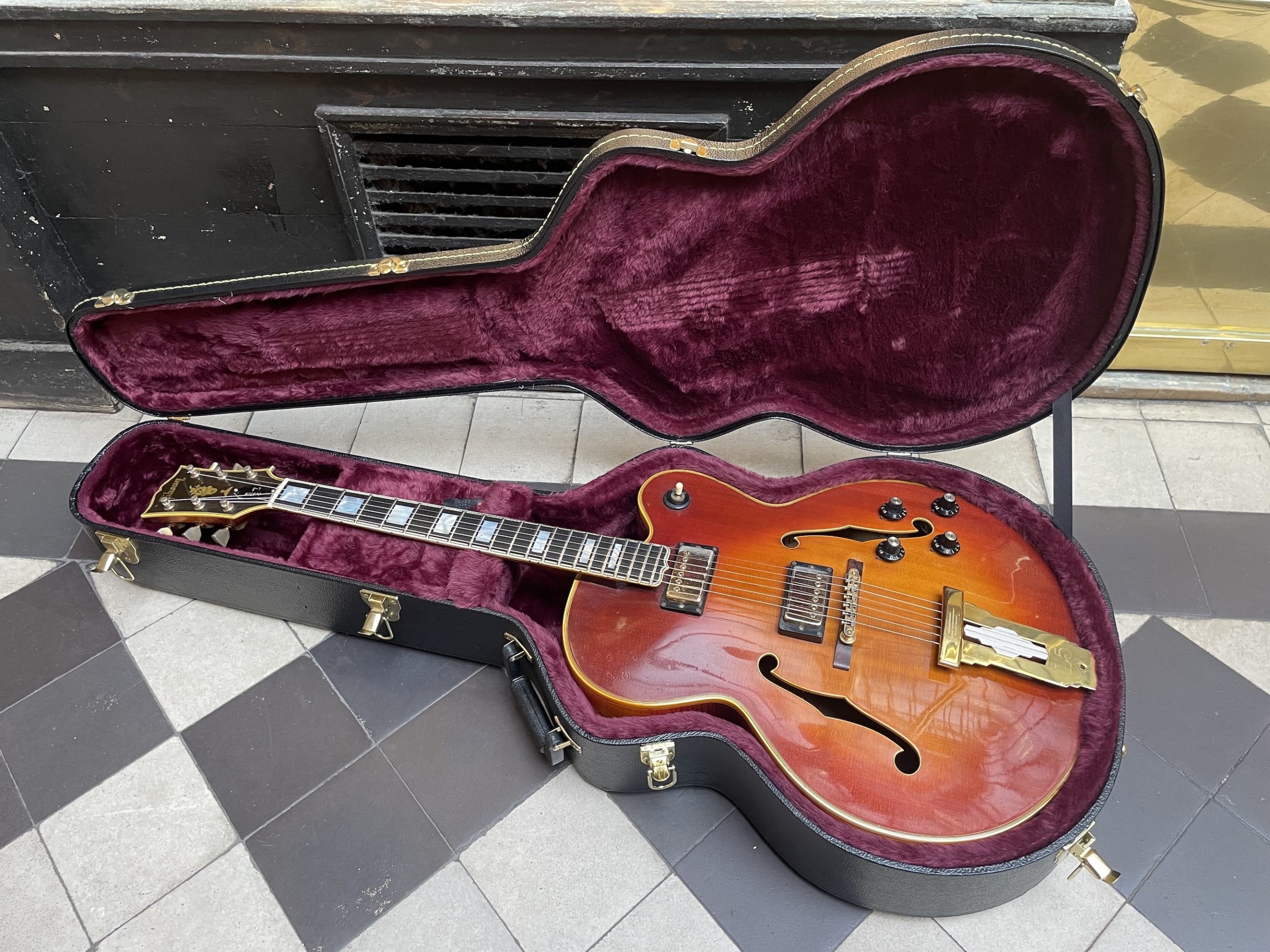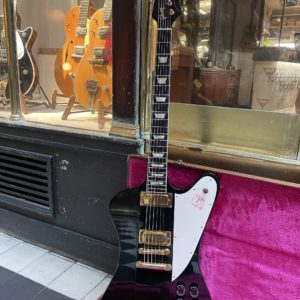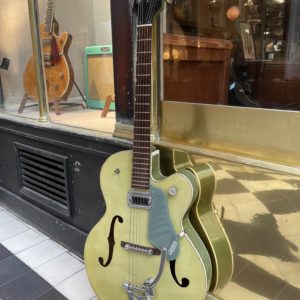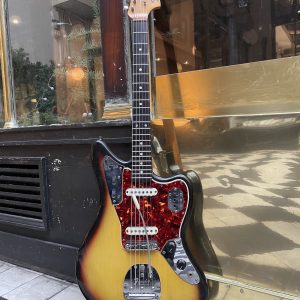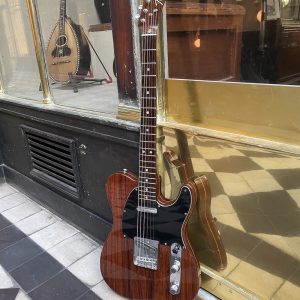c.1968 GIBSON L-5CES
€10.800,00
In stock
The prices indicated correspond to the price in the case of payment in-store or by bank transfer. In the case of payment by credit card via the website, a processing fee of [3.25% + €0.25]* will be applied to the total amount of the basket, including delivery costs.
A superb Gibson L-5CES built in Kalamazoo circa 1968, in very nice condition of preservation and playability.
The L-5 is a model that needs no introduction, everyone knows the central place it holds in the history of the guitar in the 20th century. Since its introduction in 1924 as the first American archtop guitar with f-holes, it has been an instrument that has shaped the entire world of guitar making, greatly established the guitar’s place in the musical landscape as it allowed it to enter the dance and jazz bands that were popular in the 1930s and 1940s, and has also been constantly evolving to adapt to the changing tastes and needs of musicians: increasing the size of the body, introducing the electric variant in 1951. The example presented here comes to us from the heyday of the Gibson L-5CES, the quintessential electric jazz guitar as found at the time in the hands of Wes Montgomery, George Benson, Pat Martino, Herb Ellis and many others… the shy beginnings of the 16-inch L-5 in the hands of Eddie Lang are now a long way away!
This instrument has all the typical characteristics of the late 60s and early 70s – a period of unrest for Gibson whose parent company, CMI, was struggling economically like all American instrument manufacturers (partly due to the rise of Asian competition). This resulted in a majority buyout of CMI by the conglomerate ECL Industries in late 1969, and from this merger was born the Norlin Corporation the following year (named as a combination of the names of the respective directors of CMI and ECL), opening a new (unglamorous) page in the history of Gibson characterized by excessive production and the degradation in the quality and consistency of guitars.
Fortuitously, this instrument was produced just before the cutoff marking the start of the Kalamazoo manufacturer’s wandering years, and therefore has all the high-end attributes that one would expect from this prestigious line of guitars: carved spruce top; back, sides and neck in flamed maple; orange Sunburst finish; two humbucker pickups bearing their Patent No label; beautiful Kluson Sealfast tuners; gold-plated tailpiece engraved with the model name; adjustable Tune-o-Matic bridge. The precise dating of the guitars produced in the second half of the 1960s is somewhat controversial, due to Gibson’s absolute negligence in its serial number system: from 1967 onwards, these are duplicated from numbers previously used, and there is in fact no linearity or chronology in their attribution. It is therefore appropriate to refer to the specific characteristics of an instrument in order to offer an actual year of construction: although this L-5 has a label and a Made in the USA stamp typical of Norlin, all the elements of its lutherie converge towards an earlier production (among the most obvious, the absence of a volute on the back of the neck, the veneer of the headstock in stained wood, and the Gibson “pentographed” logo typical of the late 60s) and the four original potentiometers dated to 1968 confirm these observations. In conclusion, it is not uncommon to note a time lapse between the construction and the finishing of instruments at Gibson, even more so with regard to high-end models, generally less in demand from dealers, all this in the context of the general overhaul of the company.
This guitar reaches us today superbly preserved and original, with the exception of the potentiometer knobs which are reproductions of the original part. The pickguard is also missing – as was often the case at that time, the celluloid plastic material had disintegrated, releasing corrosive vapors affecting the varnish and the metal parts, and a previous owner has removed the guard to remedy this problem. We have carried out a complete setup of this guitar with a planning of the frets, the adjustment of its action and intonation, and made a new bone nut adjusted to the string gauge in order to restore all its qualities as a musical instrument to this L-5.
Sold in a fitted Boblen hardshell case, accompanied by its certificate of authenticity made by Jérôme Casanova.
Related products
-
1971 FENDER TELECASTER ROSEWOOD
€28.000,00Original price was: €28.000,00.€25.900,00Current price is: €25.900,00.
